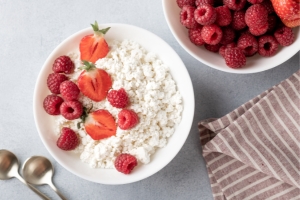The afternoon slump at work can be tough, especially when you’re managing diabetes. That urge to grab a sugary snack from the vending machine can be strong, but giving in can disrupt your blood sugar. Fortunately, with a little planning, you can enjoy satisfying snacks that keep your energy stable and support your overall health. This article explores the benefits of smart snacking for people with diabetes, offering practical guidance and evidence-based recommendations.

Why Snacking Matters for Diabetes Management
If you have diabetes, your body has difficulty regulating blood sugar levels. Smart snacking helps prevent blood sugar spikes and crashes by providing a steady source of energy. This not only keeps your energy levels consistent but also helps reduce the risk of long-term diabetes complications.
Choosing snacks with a balanced nutritional profile is crucial. The American Diabetes Association emphasizes the importance of combining carbohydrates with protein and healthy fats (2). Carbohydrates provide energy, but too many can lead to blood sugar spikes. Protein and healthy fats slow down the absorption of carbohydrates, preventing those spikes and keeping you feeling full.
Top 10 Diabetic-Friendly Snacks for Work
Here are ten convenient and nutritious snack options that are perfect for the workplace:
1. Apple Slices with Peanut Butter

This classic combination provides a balance of carbohydrates from the apple and protein and healthy fats from the peanut butter. Opt for natural peanut butter with no added sugar or salt.
2. Greek Yogurt Parfait

Greek yogurt is packed with protein, and adding berries and nuts creates a delicious and satisfying snack. Berries offer natural sweetness and antioxidants, while nuts provide healthy fats and fiber.
3. Hard-Boiled Eggs

Hard-boiled eggs are a convenient source of protein and healthy fats, making them an excellent choice for a quick and satisfying snack. For extra flavor, sprinkle on some paprika or black pepper.
4. Veggie Sticks with Hummus

Raw vegetables like carrots, celery, and bell peppers paired with hummus provide a healthy dose of fiber, vitamins, and protein. Research indicates that chickpeas, the main ingredient in hummus, can help improve blood sugar control and reduce the risk of heart disease (1).
5. Trail Mix

A mix of nuts, seeds, and a small amount of dried fruit offers a balance of protein, healthy fats, and carbohydrates for sustained energy. Making your own trail mix allows you to control the ingredients and avoid added sugars.
6. Cheese and Whole-Grain Crackers

Cheese provides protein and calcium, while whole-grain crackers offer fiber and complex carbohydrates. Look for whole-grain crackers with at least 3 grams of fiber per serving.
7. Edamame

Edamame (soybeans) are a complete protein source, meaning they contain all nine essential amino acids. They are also a good source of fiber and iron.
8. Roasted Chickpeas
Roasted chickpeas are a crunchy and flavorful alternative to chips. They are high in fiber and protein, making them a satisfying and blood sugar-friendly option. Experiment with different seasonings like chili powder, cumin, or garlic powder to create your own unique flavors.
9. Cottage Cheese with Fruit

Cottage cheese is a versatile snack that can be enjoyed with fresh fruit for added sweetness and antioxidants. Choose low-fat or nonfat cottage cheese to reduce saturated fat intake.
10. Avocado Toast

Avocado is rich in healthy fats, fiber, and vitamins, while whole-grain toast provides complex carbohydrates. Top your avocado toast with a sprinkle of red pepper flakes for an extra kick.
Mindful Snacking for Blood Sugar Control

While having a list of go-to snacks is helpful, it’s equally important to develop a mindful and sustainable approach to snacking. This involves planning, portion control, and making informed choices.
Planning Ahead
Don’t let hunger catch you off guard. Plan your snacks in advance and bring them to work to avoid impulsive choices that could derail your blood sugar goals. Preparing snacks for the week ahead of time and storing them in individual containers can make healthy snacking even more convenient.
Portion Control
Even healthy snacks can raise blood sugar levels if eaten in excess. Pay attention to portion sizes, especially for carbohydrate-rich snacks. The American Diabetes Association recommends using measuring cups and spoons to help control portion sizes (2).
Reading Food Labels
Don’t be swayed by marketing claims on food packaging. Carefully read nutrition labels, paying attention to serving size, calories, carbohydrates, protein, and fiber content. Choose snacks low in added sugars and saturated fat and high in fiber and protein.
Staying Hydrated
Sometimes thirst can be mistaken for hunger. Drink plenty of water throughout the day to stay hydrated and avoid unnecessary snacking.
Mindful Eating
When you snack, take the time to savor each bite. Avoid eating at your desk or while distracted. Instead, find a quiet spot to focus on your food and enjoy the experience. Research suggests that mindful eating can help improve blood sugar control and reduce the risk of overeating (3).
Navigating Work Events and Social Situations

Work events often involve tempting treats that can be challenging for people with diabetes. Here are some strategies for making healthy choices in these situations:
Bring a Dish to Share
Offer to bring a diabetes-friendly dish to share, ensuring there’s a healthy option available. A veggie platter with hummus or a fruit salad with a sprinkle of nuts are easy to transport and share.
Making Smart Choices
Before filling your plate, survey the food options and choose snacks that align with your meal plan. Practice portion control and be mindful of how different foods might affect your blood sugar. It’s perfectly fine to enjoy a small treat occasionally, but balance it out with healthier choices and be mindful of portion sizes. If you’re having a sugary treat, pair it with a protein-rich snack to help slow down sugar absorption.
Remember that work events are primarily about connecting with colleagues. Focus on conversations and enjoy the company of others.
Diabetic-Friendly Snacking On-the-Go
Whether you’re traveling, running errands, or simply enjoying your free time, planning ahead is key to maintaining healthy snacking habits outside of the workplace.
Be Prepared
Keep a stash of non-perishable snacks in your bag or car, such as nuts, seeds, and whole-grain crackers. A small cooler bag can keep perishable snacks like fruit and yogurt fresh.
Making Wise Choices When Dining Out
When dining out, don’t hesitate to request modifications to make your meal more diabetes-friendly. Ask for grilled or baked dishes instead of fried options, and request sauces and dressings on the side.
Listening to Your Body
Pay attention to your hunger and fullness cues. Eat when you’re truly hungry and stop when you’re comfortably satisfied. It takes time for your brain to register fullness, so eat slowly and allow your body time to catch up.
By incorporating these strategies into your daily routine, you can transform snacking from a potential challenge into a powerful tool for managing your diabetes. Remember, every healthy choice you make contributes to your overall well-being.
Save these 10 diabetic-friendly work snacks for steady energy and balanced blood sugar—and share them on Pinterest to inspire others! 🍎📌

References:
- Wallace, T. C., Murray, R., & Zelman, K. M. (2016). The Nutritional Value and Health Benefits of Chickpeas and Hummus. Nutrients, 8(12), 766.
- American Diabetes Association. (2024). Diabetes Meal Plans and a Healthy Diet.
- Miller, C. K., Kristeller, J. L., Headings, A., Nagaraja, H., & Hooker, C. (2014). Mindful eating and weight loss in women with type 2 diabetes mellitus: a pilot study. Journal of the Academy of Nutrition and Dietetics, 114(7), 1024-1032.








12 Responses
These are some great snack ideas, but I’m a bit worried about the trail mix suggestion. Most of the pre-made trail mixes I’ve seen are loaded with sugar and unhealthy ingredients. Do you have any recommendations for specific brands or a recipe for a truly diabetic-friendly trail mix? Also, I find it really hard to stick to portion sizes when it comes to nuts. They’re just so easy to overeat. Any tips for keeping portions in check?
Hi Sarah, you’re right to be cautious about pre-made trail mixes. Many do contain added sugars, chocolate, or sugar-sweetened dried fruits. The best option is to make your own! It’s really easy. Combine your favorite raw or unsalted nuts (almonds, walnuts, pecans), seeds (pumpkin, sunflower), and a small amount of unsweetened dried fruit (like a few unsweetened cranberries or goji berries). You can also add a sprinkle of unsweetened coconut flakes for extra flavor. Avoid adding any chocolate or candy. As for portion control with nuts, I totally understand. They’re delicious and easy to munch on mindlessly. Try pre-portioning your trail mix into small containers or snack bags. A good serving size for nuts is about 1/4 cup. You can also try pairing your nuts with a piece of fruit or some veggie sticks to help fill you up and make you less likely to overeat the nuts.
I struggle with finding the time to prepare healthy snacks during the work week. It’s so much easier to just grab something from the vending machine. Do you have any suggestions for quick and easy snacks that require minimal preparation? Also, I’ve heard conflicting information about cheese. Is it really a healthy snack for people with diabetes, considering its saturated fat content?
Hi Emily, I hear you! Convenience is key when it comes to healthy snacking, especially with a busy schedule. Some great no-prep options include a small apple with a tablespoon of natural peanut butter, a handful of almonds, a hard-boiled egg, or a single-serving container of Greek yogurt. You can also buy pre-cut veggie sticks and single-serving hummus cups for a super quick and easy snack. Regarding your question about cheese, it’s a good source of protein and calcium, but some types can be high in saturated fat. The American Heart Association recommends limiting saturated fat intake, especially for people with diabetes who are at higher risk of heart disease. However, recent studies suggest that the saturated fat in cheese might not be as harmful as previously thought, possibly due to other nutrients in cheese like calcium and specific fatty acids. The key is moderation and choosing lower-fat options like part-skim mozzarella or cottage cheese more often. It’s always best to discuss your individual dietary needs with your doctor or a registered dietitian.
Okay, I gotta say, this article is pretty helpful, but I have some serious questions about this “mindful snacking” thing. Like, am I supposed to meditate over my almonds or something? Seriously though, how do you actually DO mindful snacking when Brenda from accounting is yammering on about her cat’s latest hairball incident during your snack break? Also, how many almonds is too many? I could eat a whole bag, easy, but then I’m probably defeating the whole purpose, right? Help!
Jessica, you’re hilarious! No meditation required, although if you want to chant “ohm” over your almonds, who am I to judge? “Mindful snacking” is just about paying attention to what and how you’re eating. So, maybe try to tune out Brenda (or politely tell her you need a moment of peace for your snack), and focus on the taste and texture of your food. As for the almond count, a good rule of thumb is about a small handful (around 1/4 cup). You’re right, too many nuts, even healthy ones, can pack in the calories and carbs. Think of it as a satisfying nibble, not a whole meal!
This article has some good ideas, but I’m a little skeptical about the avocado toast. Isn’t avocado like, super high in fat? I thought people with diabetes were supposed to avoid fatty foods? Also, what kind of bread are we talking about here? White bread is obviously a no-go, but even some of those “whole wheat” breads are sneaky with added sugar. And one more thing – what if you HATE avocados? Any alternatives? My taste buds are offended just thinking about them.
Sarah, great questions! It’s true, avocados are high in fat, but it’s the GOOD kind of fat – monounsaturated and polyunsaturated fats, which can actually help improve cholesterol levels and are beneficial for heart health. So, for most people with diabetes, avocado in moderation is totally fine. As for the bread, you’re spot on – white bread is best avoided. Look for 100% whole-grain bread with at least 3 grams of fiber per slice, and always check the label for hidden sugars. And if you’re not an avocado fan, no worries! You could try topping your whole-grain toast with a thin layer of natural peanut butter (check for no added sugar!), or a sprinkle of seeds for that healthy fat and added crunch. There are plenty of other options in the article to try out!
Okay, ‘mindful snacking’? Is that code for ‘boring snacking’? Seriously though, I work a high-stress job, and sometimes a girl just needs a little something sweet to get through the afternoon. Are you telling me I can NEVER have a cookie again? Also, ‘veggie sticks with hummus’? That sounds like rabbit food. And what about those pre-packaged 100-calorie snack packs? Are those okay? They seem convenient. Give me some real-world advice here!
Hey Linda, Snack Queen, I hear you! ‘Mindful snacking’ doesn’t mean you have to banish all joy (and cookies!) from your life. It just means being a little more aware of WHAT and WHY you’re snacking. Think of it like this: you can still enjoy a cookie, but maybe instead of mindlessly munching it at your desk while answering emails, you take a little break, savor each bite, and really enjoy it. And maybe you pair that cookie with a handful of nuts for some protein to balance things out. As for those 100-calorie packs, some can be okay, but always check the label! Some are loaded with sugar and artificial ingredients, which won’t do your blood sugar any favors. And hey, if veggie sticks and hummus aren’t your jam, there are tons of other options! A small apple with peanut butter, a hard-boiled egg, or even some Greek yogurt with berries can be delicious and satisfying. It’s all about finding what works for YOU and your taste buds! This is about making choices that make you feel good, both physically and mentally!
This all sounds great in theory, but I’m a busy working mom. I barely have time to pack my kids’ lunches, let alone plan out elaborate snacks for myself. ‘Planning ahead’? Yeah, right! And ‘mindful eating’? I’m lucky if I can scarf down a granola bar between meetings! Are there any REALLY quick and easy snack ideas that don’t require a ton of prep work? Also, I’m allergic to nuts, so a lot of these suggestions won’t work for me. Any nut-free alternatives? And how can I make snacks like these appealing to my kids too?
Hey Patricia, I totally get it – life as a working mom is a whirlwind! ‘Planning ahead’ can be as simple as throwing a few hard-boiled eggs, a baggie of edamame, or some cheese sticks into your bag in the morning. No elaborate prep work required! And trust me, you can be mindful even while scarfing down a snack between meetings. It’s about taking even just a few seconds to check in with your body and make a conscious choice. For nut-free alternatives, you’ve got tons of options! Sunflower seed butter is a great swap for peanut butter. Roasted chickpeas, pumpkin seeds, or edamame are other great nut-free snacks. As for making these snacks appealing to your kids, try getting them involved in the process! Let them help you make a trail mix (with seeds instead of nuts), or create fun shapes with fruits and veggies. You can also try pairing healthy snacks with a small amount of their favorite treat to make the transition easier. It is about finding small, manageable steps that fit into your busy life. You got this!